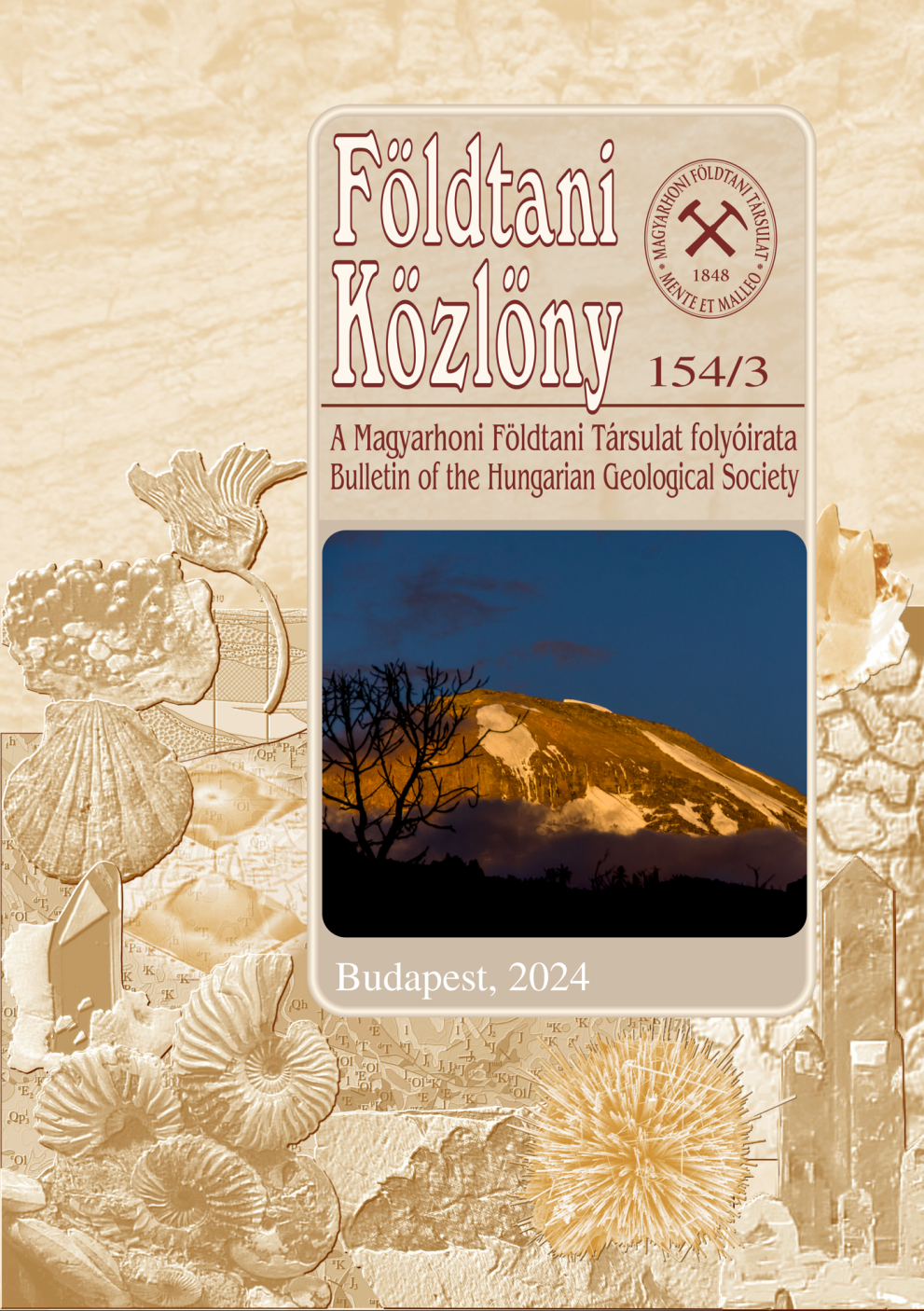Preliminary data on the diagenesis ofCretaceous Dinosaur bonesfrom the Bakony Mts, Hungary
Abstract
A mineralogical and geochemical study of Late Cretaceous Dinosaur bones (femur and rib fragments)
from the alluvial Csehbánya Formation (Iharkút, Hungary) revealed that, notwithstanding their age,
recrystallization of bone apatité in the studied specimens was very slight. The originál bone-structure is
almost perfectly preserved. The apatité phase of the studied bones consists essentially of very finegrained hydroxil apatité with only traces of F; however, there are alsó detectable amounts of U. The sizedistribution of the apatité crystallites is bimodal: there are isometric crystals 10^10 nm in width and
length and larger, oblong-shaped crystals up to 300 nm in length. Their orange colouring comes from the
presence of 1.17% bone-organic matter (altered collagene?). Early diagenetic pyrite filling the Haversian
channels, and the tiny little lacunae in between the osteons, shows that mineralization in an S-rich
environment must be postulated for the early stages of diagenesis. The last cement phase is sparry
calcite, filling all the remaining porosity.
To understand the reasons for the extraordinarily slight diagenetic change, the vitrinite reflectivity of
finely-dispersed organic matter from the enclosing alluvial sediments was alsó measured. This gave a
maximum burial depth of 600 to 900 m, equivalent to temperatures of approximately 80 to 90 degrees
Celsius or less for the Dinosaur-bearing beds.
Our observations raised two important questions:
(1) What was the reason for the observed intensity of pyritization in this supposedly fresh-water
alluvial environment? (Was it perhaps due to a fiat extensive delta-plain of a low-gradient river, where
marine pore-water incursions could already have been present during early diagenesis?)
(2) What was the reason for the apparent "freeze in" of the recrystallization process of the boneapatite? This resulted in the unusually small crystal-size and in the obviously very slight chemical
alteration of the apatité crystallites as compared to other fossil dinosaur bones. (Was it because of the
anomalous burial and/or thermal history of the Mesozoic Iharkút block, or rather the efficient sealing of
the bones from the continued arculation of diagenetic fluids, either by the enclosing fine-grained
overbank sediments or by early cementation?)











